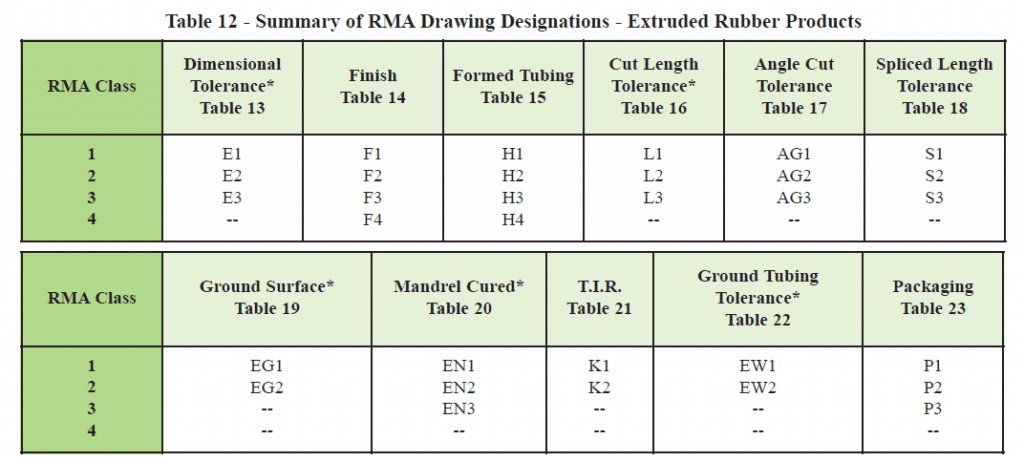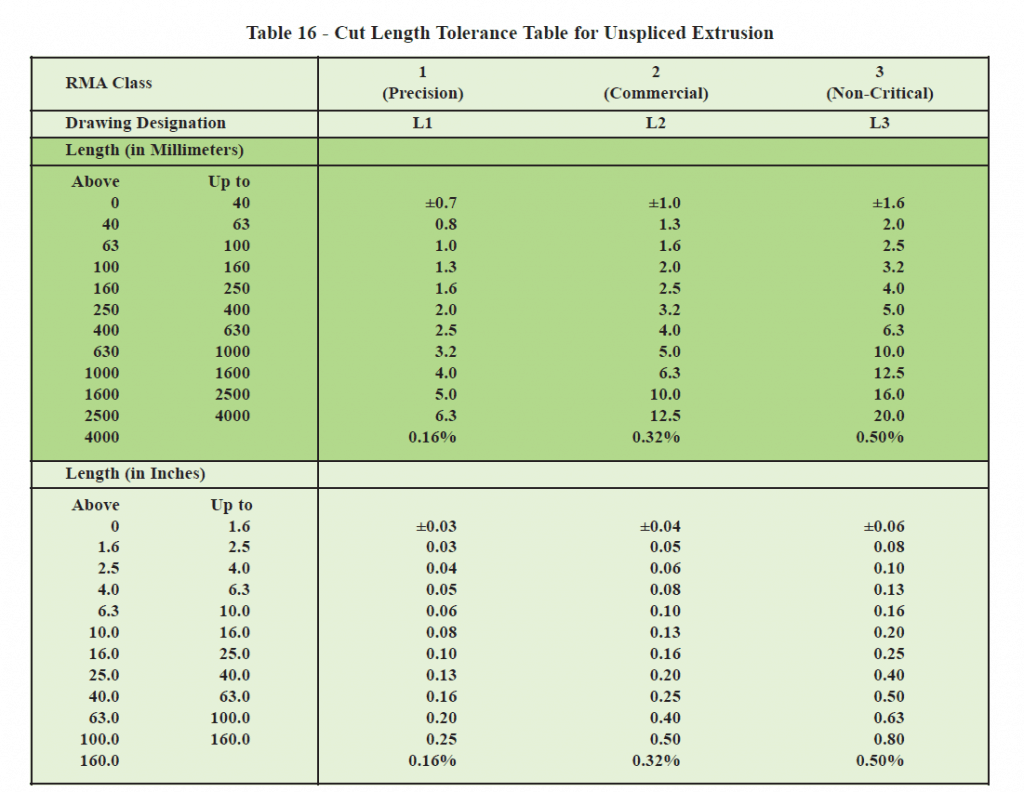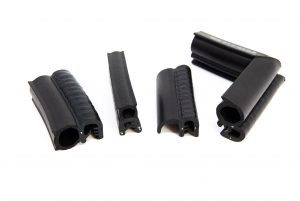Rubber part tolerances are allowable size variations for industrial rubber products. Known also as dimensional tolerances, these numbers are given as plus or minus (±) values for a range of part sizes. Engineers routinely put dimensions on drawings, but did you know that rubber part tolerances and metal part tolerances aren’t the same? If you design a rubber part with the same engineering tolerances as a metal one, you may have to revise your part design.
The RMA Handbook, a publication from the Rubber Manufacturers Association (RMA), can help you to avoid this situation. This technical publication defines part tolerances and arranges them into classes so that material suppliers, rubber fabricators, and product engineers all speak a “common language”. The RMA Handbook contains tables with the dimensions you can expect for each class of molded or extruded rubber products. There are also different tables for different processes, such as angled cuts vs. spliced lengths.
Rubber Profiles vs. Metal Profiles
Still, many engineers still know less about rubber part tolerances than they do about metal ones. That can present a challenge when it’s time to design rubber seals, gaskets, or insulation. Metals have different material properties than rubber, and metal part tolerances are tighter or finer. There are several reasons for this. First, rubber is more sensitive than metal to changes in temperature and humidity. Rubber fabrication also uses different tooling and equipment than metalworking.
Are you used to working with sheet metal or metal profiles? Then you may find there’s a learning curve with rubber – a group of materials that includes synthetic thermosetting elastomers as well as natural rubber. You may also experience some confusion or frustration if you submit a drawing that requires revisions because of the tolerances that are listed. To ensure a smoother design process then, it helps to understand a few basics about what inside the RMA Handbook. Here’s what you need to know.
Molded Rubber Products
The RMA Handbook lists four levels of engineering tolerances for molded rubber products.
- A1 – High Precision
- A2 – Precision
- A3 – Commercial
- A4 – Basic
As a rule, higher-precision rubber products have higher material costs. They’re more expensive to mold because the design and machining requires a greater degree of precision. That’s why the RMA Handbook recommends limiting high-precision tolerances to critical dimensions. For many molded rubber parts, commercial tolerances (A3) are just fine.
When you use the RMA Handbook for molded rubber products, find the tolerance table that you need. For example, Table 4 is for molded rubber products with commercial (A3) tolerances. For each range of millimeter and inch-based part sizes, you’ll see that plus and minus (±) amounts are given for fixed and closure dimensions.

Extruded Rubber Products
Extruded rubber products differ from molded rubber products in the way that they’re made. Extrusions are forced through a die with a specific cross-section while under pressure. The die is a precision-made tool, but most rubber compounds swell and increase in dimension when they exit the die orifice.
There are four RMA classes for extruded rubber tolerances.
- 1 – High Precision
- 2 – Precision
- 3 – Commercial
- 4 – Basic
There are also many different tolerance tables, as Table 12 in the RMA Handbook shows.

When you use the RMA Handbook for extruded rubber products, find the tolerance table that you need. For example, Table 16 is the cut length tolerance table for unspliced extrusions.

Get Help With Rubber Part Tolerances
Elasto Proxy, an experienced rubber fabricator, can help you to specify rubber part tolerances for your drawings. You can also download the RMA Handbook from our website.










